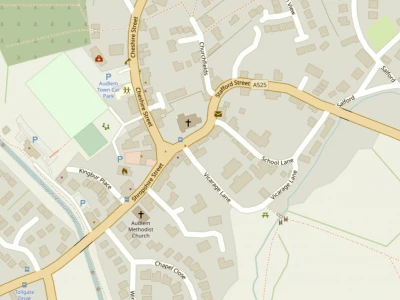







The Hitler Diary Hoax
The Hitler Diaries were a series of sixty volumes of journals purportedly written by Adolf Hitler, but forged by Konrad Kujau between 1981 and 1983. The diaries were purchased in 1983 for 9.3 million Deutsche Marks (£2.33 million or $3.7 million) by the West German news magazine Stern, who revealed their existence in an announcement on April 22nd, 1983.
On 20 April 1945--Adolf Hitler's 56th birthday--Soviet troops were on the verge of taking Berlin and the Western Allies had already taken several German cities. Hitler's private secretary, Martin Bormann, put into action Operation Seraglio, a plan to evacuate the key and favoured members of Hitler's entourage from the Berlin bunker where they were based, the Führerbunker, to an Alpine command centre near Berchtesgaden--Hitler's retreat in southern Germany. Ten aeroplanes flew out from Gatow airfield under the overall command of General Hans Baur, Hitler's personal pilot. The final flight out was a Junkers Ju 352 transport plane, piloted by Major Friedrich Gundlfinger--on board were ten heavy chests under the supervision of Hitler's personal valet Sergeant Wilhelm Arndt. The plane crashed into the Heidenholz Forest, near the Czechoslovak border.
When Baur told Hitler what had happened, the German leader expressed grief at the loss of Arndt, and added: "I entrusted him with extremely valuable documents which would show posterity the truth of my actions!". Apart from this quoted sentence, there is no indication of what was in the boxes. In the decades following the war, the possibility of a hidden cache of private papers belonging to Hitler became, according to the journalist Robert Harris, a "tantalizing state of affairs taht was to provide the perfect scenario for forgery".
In 1983, Stern sold the serialisation rights of the "diaries" to several news organisations. One such publication, the British newspaper The Sunday Times, asked their independent director, the historian Hugh Trevor-Roper, to authenticate the diaries; he pronounced them genuine. At the press conference to announce the publication, Trevor-Roper announced that he had changed his mind, and other historians also raised questions concerning their validity. Rigorous forensic analysis, which had not been performed previously, quickly confirmed that the diaries were fakes.
Kujau, born and raised in East Germany, had a history of petty crime and deception. In the mid-1970s he began selling Nazi memorabilia which he was smuggling from the East, but found he could raise the prices by forging additional authentication details to link ordinary souvenirs to the Nazi leaders. He began forging paintings by Hitler and an increasing number of notes, poems and letters, until he produced his first diary in the mid- to late 1970s. The West German journalist with Stern who "discovered" the diaries and was involved in their purchase was Gerd Heidemann, who had an obsession with the Nazis. When Stern started buying the diaries, Heidemann stole a significant proportion of the money.
Kujau and Heidemann spent time in prison for their parts in the fraud, and several newspaper editors lost their jobs. The story of the scandal was the basis for the films Selling Hitler (1991) for the British channel ITV and the German cinema release Schtonk! (1992).
This article is from our news archive. As a result pictures or videos originally associated with it may have been removed and some of the content may no longer be accurate or relevant.
Get In Touch
AudlemOnline is powered by our active community.
Please send us your news and views using the button below:
Email: editor@audlem.org


